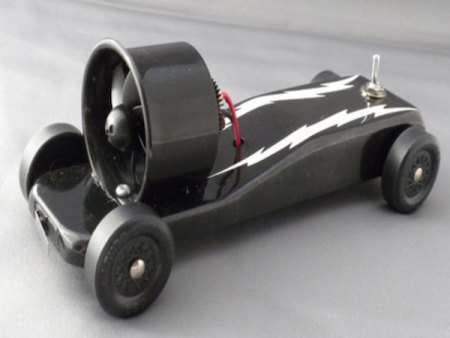Whoosh!
As locals, residents, and visitors of the Outer Banks know, it can get windy out here. It’s not unusual for the wind to blow at a steady 15-20mph, regardless of the season, and that wind can be put to good use.

A few months ago, plans to test the efficiency of the solar power on Ocracoke were announced. Gaining support of the local population, other companies began to think “going green” may work in other ways, too. Now, wind-power technology will be tested along the Outer Banks as a way to fuel vehicles and reduce harmful vehicle emissions. The windmills we see scattered about wind farms are a bit too big to be placed on a vehicle, so scientists and inventors have managed to create a new way to utilize wind: through a small solar panel and a typical household table fan.
The Porsche USA innovators behind the idea have devised a way to connect a solar panel to the battery and alternator, which will give the vehicle enough power to start. A small fan, attached to the hood, will be wired into the engine to work either independently or along with gasoline (depending on how much wind-energy has been accumulated) to propel the vehicle. So far, these innovators have only been successful with this idea on two or four door sedans. Michael Delaney, of Porsche USA, explained that residents of the Outer Banks can participate in the project free of charge, but must submit a report stating the vehicle is in adequate condition and the report – obtained through a certified mechanic - must list any pre-existing problems the vehicle has. Vehicles with more than one pre-existing problem could be barred from the study. Acceptance into the program will ultimately be determined by Porsche USA, based on the severity of the diagnosed problem.
Participants will also be asked to record data once the solar panel and fan are attached. Recording wind speed, level of sun exposure, the amount of time wind power can be sustained, and the maximum speeds reached are all required elements for each participant to list. Sun exposure documentation relates to weather conditions (partly sunny, partly cloudy, and cloudy), if the vehicle is parked under a tree or is shaded by any buildings, and the amount of time the vehicle’s solar panel can soak up the sun. Participants will also be asked to list other details: were the windows down while the vehicle was in use? Did the driver use the A/C or heat? What kind of traffic conditions was the driver experiencing (smooth sailing, congested but moving, stop-and-go, or if traffic came to a complete halt)?
The fan will only be required to be in an upright position while parked. Researchers have found that in speeds exceeding 65mph, the fan can become dislodged from the hood, which could potentially cause an accident. Mr. Delaney explained that, “when accumulated wind energy runs out, the engine will automatically switch to using gasoline. When this happens, a voice alert technology – named Hal 9,000 – will notify the driver through a special device installed in the vehicle’s radio. The driver is asked to dictate all appropriate data to Hal 9,000 when they are safely parked and able to do so. This information is to be submitted monthly and will be stored at a central data collection site."
Interested in participating in the project? Michael Delaney and his innovation team from Porsche USA will be visiting the Outer Banks in April and May. Dates TBA.
Thanks, dear readers, for indulging us on the most fun newsday of the whole year!



